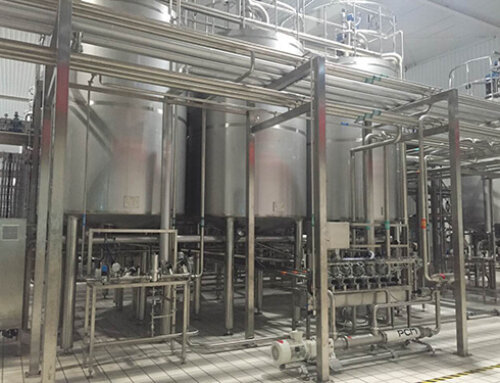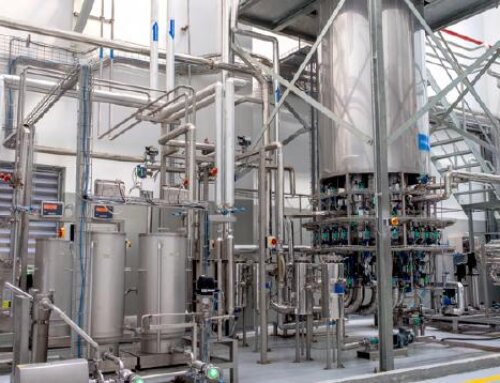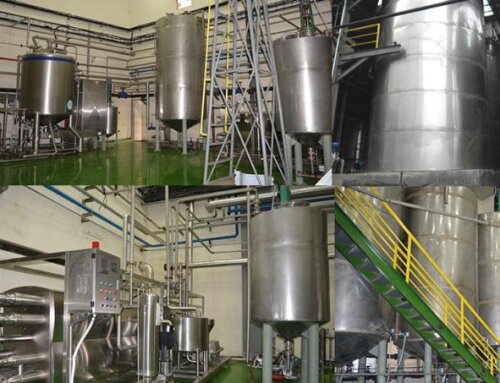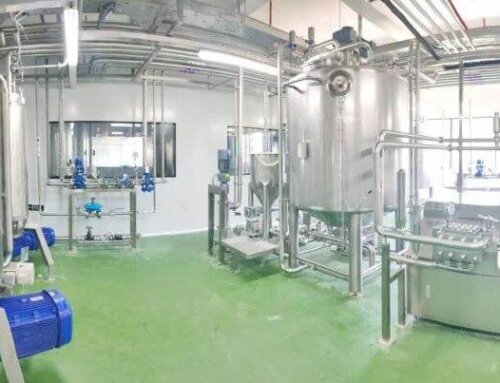Dried Fruit Processing Technology Description
- Fruit and vegetable drying technology refers to use physical methods to reduce the water content in fruits and vegetables and inhibit the growth and reproduction of microorganisms in fruits and vegetables. At the same time, the activity of enzymes contained in fruits and vegetables is also inhibited, so that the dry products can be stored for a long time. The moisture content of fruits and vegetables is very high, generally around 70%-90%, after drying and dehydration, the moisture content of the final product is around 5%-15%. The dry fruit and vegetable product is small in size, easy to transport, and has a long shelf life. .
- There are many fruits and vegetables suitable for drying, such as blueberries, strawberries, coconuts, apricots, mangos, apples, lemons, pineapples and bananas. Vegetables include tomatoes, carrots, mushrooms, fungus, garlic, etc.
- Fruit and vegetable drying is divided into whole fruit drying, fruit sliced or shredded drying, and fruit powder drying. At present, the mainstream drying methods on the market include vacuum drying, heat pump drying, belt drying, centrifugal spray drying and fluidized bed drying technology. Among them, vacuum drying and heat pump drying are suitable for batches of whole fruit and dried fruit drying, belt drying is suitable for continuous production of dried fruit, and centrifugal spray drying is mainly used for drying powder products.
- The drying process of fruit and vegetable dehydration: When the working environment of the fruit and vegetable has a temperature difference and a humidity difference, the water starts to evaporate from the surface of the fruit and vegetable, which causes the water content of the surface to be lower than the internal water content. The osmotic pressure difference connecting the inner and outer cells is formed. In order to maintain the water balance between the inner and outer cells, under the influence of the difference in humidity and temperature between the inner and outer layers, water transfers from the inside to the outside, and then evaporates through the surface to the center of the fruit and vegetable. The constant evaporation of water causes the concentration in the cell to increase continuously, so the outward transfer of water will be blocked and gradually slow down, causing the evaporation rate to decrease. At this time, if the surface moisture evaporates too fast, the diffusion and transfer of the internal moisture will not keep up, causing the outer surface to crust, affecting the continued dehydration of fruits and vegetables, and coking the surface. In addition, the surface heats up, which increases the temperature difference between the inside and the outside, and when the heat is conducted inward, the inside heats up to produce expansion and pressurization. Excessive pressurization can cause fruits and vegetables to rupture, which affects product quality.
- The capacity of the dried fruit processing plant is from 1 ton per day to 20 tons per day. One batch fruit drying process takes about 20-30 hours.
- In the fruit drying process, in order to improve the flavor of dried fruit products, sugar soaking or salting processes are also added.

Dried Fruit Processing Technological Flowchart
Whole fruit and vegetabes drying processing technological flowchart
After fresh fruits and vegetables are disinfected and cleaned, moldy secondary fruits are selected, and then the fruits and vegetables are air-dried and sent to a dryer for drying. The commonly used equipment for whole fruit drying is belt drying and vacuum drying. It is suitable for sour plums, dates, grapes, blueberries, apricots, plums and other fruits and shiitake mushrooms, fungus and other vegetables.
Fruit slice/chips drying processing technological flowchart
After the fresh fruit is cleaned and sorted, peeled and pitted, blanched to inactivate enzymes, then sliced, shredded or diced, and finally transported to a dryer to dry to the required moisture. Commonly used dryers are belt drying, vibration drying fluidized bed, heat pump drying or vacuum drying machine. Desiccated coconut, mango slices, pineapple slices, banana slices, lemon slices, kiwi slices carrot slices, etc. are all suitable for fruit slice drying.
Fruit powder drying processing technological flowchart
Most products that can be processed for fruit pulp( juice) can be spray-dried to make fruit powder. The fruit is washed, peeled, pitted, deseeded, and crushed. Then the fruit pulp (juice) is produced by a pulping machine or a juice extractor, and then concentrated into a concentrated fruit and vegetable juice by an evaporator, and then the concentrated fruit and vegetable powder is produced by a spray drying tower. At last, the fruit powder will fill into the container.

Dried Fruit Processing Equipment Introduction
Fruit and vegetable washing machine
The fresh fruit and vegetables need to be washed and disinfected by disinfectant and RO water. Choose 1% NaOH solution and 0.1%-0.2% washing solution, soak in water at 40°C for 10 minutes, and then rinse with spraying water.
Various fruits have different features, pressure resistance and friction resistance, so we need to use different washing/cleaning equipment. Commonly used fruit and vegetable washing/cleaning equipment includes drum cleaning machines, air bubble cleaning machines and brush cleaning machines. A high-pressure water nozzle can be installed in the washing tank during the cleaning process to increase the cleaning effect and efficiency.

Fruit and vegetable peeling machine/deseeding machine/pitting machine
Some fruit and vegetable skins are rich in cellulose, pectin and cutin, rough and hard, such as mango, pineapple, etc.; some contain more tannins or bad taste, such as apples, pears, peaches, etc. There are also some fruits whose pulp is wrapped by the peel, such as bananas, pomegranates, citrus, etc. Therefore, these fruits need to be peeled before drying to improve the quality of the product, and at the same time, the water is easy to evaporate during the subsequent drying process. Common methods of peeling fruits and vegetables include manual peeling, mechanical peeling, blanching peeling, lye peeling and other methods.
There are also some fruits with pits in the pulp after peeling, which should also be removed, such as peaches, apricots, plums, mangoes, dates, avocados and other fruits. There are also two ways to remove the core of the fruit. Manually use a stainless steel knife to dig out the core or use a machine to remove the core. Choose the appropriate way to remove the core according to the production capacity and actual situation of the production line.

Fruit and vegetable cutting machine
After the fruit is cut, it can speed up the evaporation of water during the drying process, and it is also convenient to eat. The cutting of the fruit can take different cutting methods according to the character and size of the raw material. Potatoes, radishes can be cut into round slices, thin dice or cubes, and apples, citrus, mango or pineapple can be cut into slices or petals.
The slicer and dicer machine is suitable for cutting fruits and vegetables into slices and dices. Fruit slicing range: 1-10MM optional; Fruit cutting dice range: 6MM 8MM 10MM 12MM 15MM 20MM. The whole machine is made of SUS304 material, and capacity is from 200kg-5000kg available for choose, it is an necessary equipment for dry fruit slice processing. After slicing, soak the fruit slice into 0.1% citric acid solution to protect the fruit color.

Fruit and vegetable blanching machine
Blanching is an important pretreatment step before the drying of fruits and vegetables. The prepared raw materials are heated with boiling water or steam for a short time to destroy the enzymes in the fruits and vegetables and prevent oxidation and discoloration in the subsequent drying process. The steam or hot water used in the blanching process also has the effect of cleaning and eliminating microorganisms on the surface of fruits and vegetables.
The temperature of the blanching is based on the boiling point of water, and the blanching time is about 10S-30MIN, which is determined according to the type, variety, maturity, and size of fruits and vegetables.

Fruit and vegetable drying machine
Fruit and vegetable drying machine is the most important machine in dry fruit processing, air convection drying is the most common method for drying fruits and vegetables. It uses hot dry air as the medium to transfer heat to the materials in a convection manner, and at the same time discharge the water evaporated from the materials. The necessary components of atmospheric pressure drying equipment include air heaters, air filters, drying chambers, fans, etc. According to the mode of operation, it can be divided into batch type and continuous type. The main equipment is belt dryer, heat pump dryer, vacuum dryer, spray dryer, etc.
Here introduce the drying processes of mango and pineapple slice drying: Cut the fresh mango or pineapple into 3-6mm thickness slices, then blanched into the hot water(95-100℃for 3-5 minutes), after that, to increase the flavor, soak the mango or pineapple slice into the syrup(10-22°Be) for 20 hours, after syrup soaking, use RO water to wash down the syrup on the surface of the fruits, then send the mango slice into the dryer. Use a vacuum dryer to process the mango slice, the technological flowchart is 100kpa, 50-60℃drying for 20-22 hours, after drying, the mango slice will be filled into pouches. Using the vacuum drying technology, the mango flavor, and color can be kept to the most extend.

Dried fruit and vegetable filling machine
The dry fruit slice/dice will be filled into pouches/bags. The bag-filling machine is composed of date coding machine, PLC control system, bag opening guide device, vibration device, dust removal device, solenoid valve, temperature controller, frequency converter, and output system, material metering filling machine, working platform, weight sorting scale, material hoist, vibrating feeder, finished product conveying hoist, metal detector.

Metal detector
The metal detector is mainly used for detecting iron, stainless steel, copper, aluminum and other non-ferrous metals in fruit slice containers. The achievable indicators of detection sensitivity are stainless steel SUS up to φ1.5mm, iron FE up to φ0.7mm.





